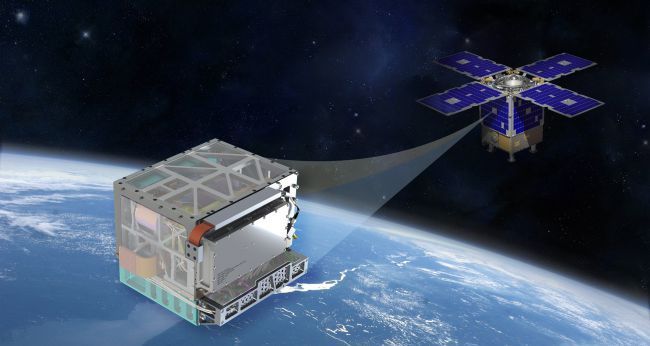NASA's Tiny New Atomic Clock Could Let Spacecraft Drive Themselves in Deep Space
By Rafi Letzter 6 hours ago Space
It's about the size of a toaster

An illustration shows the Deep Space Atomic Clock aboard its orbital testbed.(Image: © NASA/JPL)
NASA has switched on a new, super-precise, space-based atomic clock that the agency hopes will one day help spacecraft drive themselves through deep space without relying on Earthbound clocks.
It's called the Deep Space Atomic Clock (DSAC), and it works by measuring the behaviors of mercury ions trapped in its small frame. It's been in orbit since June, but it was first successfully activated on Aug. 23. It's not at all flashy — just a gray box about the size of a four-slice toaster and full of wires, Jill Seubert, an aerospace engineer and one of the leaders of the project at NASA, told Live Science. But that unassuming size is the point: Suebert and her colleagues are working to engineer a clock small enough to load onto any spacecraft and precise enough to guide complicated maneuvers in deep space without any input from its refrigerator-sized cousins on Earth.
You need a precise clock to find your way around space because it's big and empty. There are few landmarks by which to judge your position or velocity, and most are too far away to offer precise information. So every decision to turn a ship or fire its thrusters, Seubert said, begins with three questions: Where am I? How fast am I moving? And in what direction?
The best way to answer those questions is to look at objects for which the answers are already known, like radio transmitters on Earth, or GPS satellites following known orbital tracks through space. Send out a signal at light speed with the precise time at point A and measure how long it takes to get to point B. That tells you the distance between A and B. Send two more signals from two more locations, and you'll have enough information to figure out exactly where point B is in three-dimensional space. (This is how the GPS software on your phone works: by constantly checking the minute differences in time signatures broadcast by different orbiting satellites.)
More:
https://www.livescience.com/atomic-clock-in-space-is-on.html
